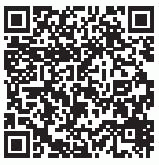Vertebrobasilar TIAs: Basilar Artery Stenosis
OBJECTIVES
To review clinical manifestations of vertebrobasilar circulation transient ischemic attack (TIAs).
To review clinical manifestations of carotid circulation TIAs.
To review therapeutic strategies for symptomatic basilar artery stenosis.
VIGNETTE
Over the course of 1 year, this 78-year-old hypertensive man developed recurrent, brief, nonpositional spells of slurred speech, double vision, circumoral numbness, left-sided weakness, and imbalance. He initially received platelet antiaggregants. Subsequently, he was treated with warfarin without resolution of his spells.
 |
The most common causes of ischemic strokes and TIAs are atheromatous disease of large- and medium-sized extracranial and/or intracranial arteries, small vessel disease, and cardiac embolism. Intracranial atherosclerosis is an important cause of ischemic stroke, especially among African-Americans and Asians. Our patient had recurrent episodes of vertebrobasilar ischemia, associated with a high-grade basilar artery stenosis. He had angioplasty and stenting of the basilar artery, as he had disabling refractory episodes of vertebrobasilar ischemia, despite several antiplatelet agents alone or in combination, and warfarin therapy.
The brainstem, cerebellum, and labyrinths are supplied by the vertebrobasilar arterial system. The basilar artery is formed by the vertebral arteries at the level of the pontomedullary junction. Three branches on each side provide blood supply to the cerebellum; the posterior inferior cerebellar artery (PICA) usually originates from the intracranial
segment of the vertebral artery, whereas the anterior inferior cerebellar artery (AICA) and the superior cerebellar artery (SCA) arise from the basilar artery.
segment of the vertebral artery, whereas the anterior inferior cerebellar artery (AICA) and the superior cerebellar artery (SCA) arise from the basilar artery.
TABLE 35.1 CLINICOANATOMICAL CORRELATION OF DISORDERS OF NEUROVASCULAR FUNCTION
Stay updated, free articles. Join our Telegram channel
Full access? Get Clinical Tree
 Get Clinical Tree app for offline access
Get Clinical Tree app for offline access

|
|---|





